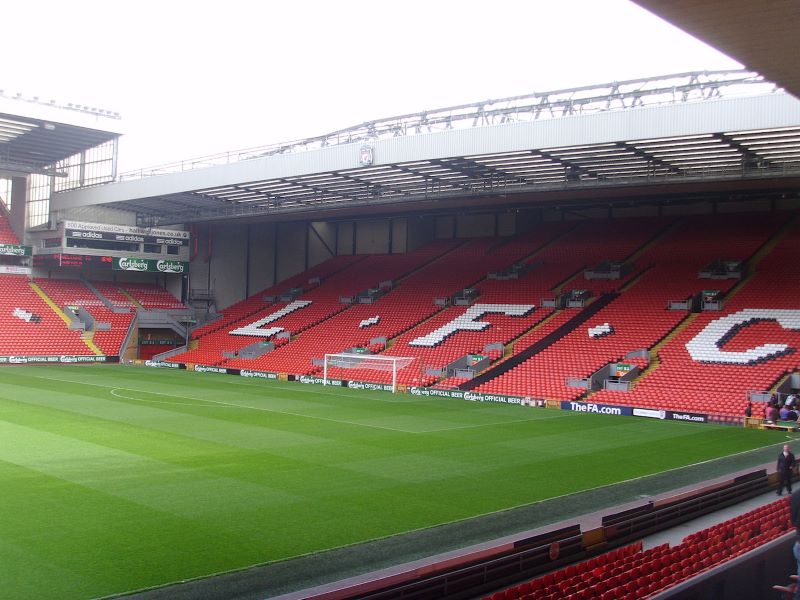Table of Contents
ToggleThe Premier League Liverpool Stadium, Anfield
Name: Anfield
Location: Anfield, Liverpool, Merseyside, England
Owner: Liverpool F.C.
Operator: Liverpool F.C.
Capacity: 61,015
Opened: 1884
The Premier League stadium Anfield, the iconic football stadium located in Liverpool, Merseyside, England, is a place where history, passion, and sportsmanship converge. Since its inception in 1884, Anfield has stood witness to the triumphs and challenges of Liverpool, shaping the identity of a city and its people.
With a capacity of 61,015, Anfield ranks as the seventh largest football stadium in England.
The Evolution of Anfield
Anfield’s story began in 1884 when Everton Football Club took residence in the stadium, accommodating the growing interest in the sport. In 1892, a club dispute led to Everton’s departure, leaving the stadium vacant.
Seizing the opportunity, Liverpool Football Club was formed and made Anfield its home. Over the years, the stadium’s four stands—the Spion Kop, the Main Stand, the Sir Kenny Dalglish Stand, and the Anfield Road End—became symbols of the team’s history and a testament to the passion of its supporters.
Anfield’s Historic Stands
Each of Anfield’s stands carries a unique legacy. The Spion Kop, once a terraced banking that could hold over 30,000 spectators, is now a single-tier stand and the spiritual heart of the stadium, housing the club’s museum and shop.
The Main Stand, the oldest stand at Anfield, underwent extensive redevelopment in 2016, adding a third tier and modern amenities while preserving its historic significance.
The Sir Kenny Dalglish Stand, named after the legendary player and manager, honors his contributions to the club.
The Anfield Road End, the stand facing the Main Stand, has seen various upgrades over the years, transforming it into a two-tiered structure and increasing its seating capacity.
Legendary Managers and Their Legacy
Two of one of the most followed Premier League football clubs in the world, Liverpool’s most revered managers, Bill Shankly and Bob Paisley, have left an indelible mark on the stadium and the club. Gates named after them pay homage to their leadership and achievements.
Statues of Shankly and Paisley stand outside the stadium, serving as a reminder of their enduring influence. The “You’ll Never Walk Alone” motto adorns the entrance, reflecting the unity and spirit instilled by Shankly during his tenure.
Redevelopment: Past and Present
Anfield’s evolution has been marked by different redevelopment projects. Plans to replace Anfield with a new stadium at Stanley Park were proposed in 2002 but eventually abandoned in favor of expansion. The most significant redevelopment was made with the Main Stand in 2016, adding over 8,500 seats and modern facilities. The completion of this phase marked a major milestone in Anfield’s history, enhancing the matchday experience for fans and players alike.
A Glimpse into the Future
The next phase of redevelopment aims to enhance the Anfield Road End, further cementing Anfield’s status as an iconic football destination. The project will add more seating capacity, allowing the stadium to accommodate over 61,000 fans.
This phase, set for completion by the Premier League 2023-24 season, during which Liverpool will play 19 home fixtures in Anfield.
Conclusion
Anfield is not just a stadium; it’s a testament to the unbreakable bond between one of the most followed football clubs, Liverpool and its fans. The evolution of Anfield reflects the club’s growth, resilience, and unwavering spirit.
From its humble beginnings as a field on a slope to becoming one of the most iconic football venues in the world, Anfield stands as a symbol of unity, history, and triumph.


